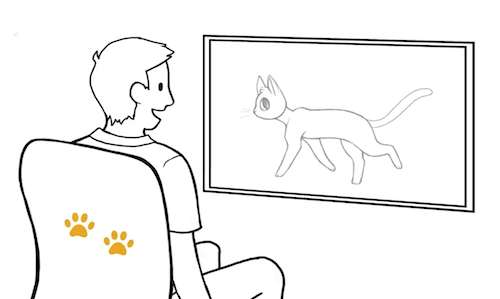New software plug-in enables users to add haptic effects to games, media

A library developed by Disney Research makes adding a haptic, or "feel" effect to a video game, movie or virtual simulation simple enough that a novice can do it.
The library contains more than 50 feel effects, including the feel of falling rain, a walking cat and a beating heart. The accompanying software, called FeelCraft, monitors action in the entertainment and links it with an associated effect in the library, which the user can then adjust as necessary - making rain heavy or light or somewhere in between, or making a cat run rather than walk.
"We believe that allowing users, even novices, to access, customize and share haptic effects will bring haptics into the mainstream of electronic storytelling, much like sound effects and visual effects," said Ali Israr, senior research engineer at Disney Research Pittsburgh. "Once people can create intimate and engaging experiences for themselves and others, haptics effects can be utilized in everyday activities."
FeelCraft users can save the feel effects they develop for a game or movie and share them with other users. The Disney researchers have demonstrated the technology by integrating it into a videogame, in which users can associate six events with a corresponding feel effect. The haptic effects of riding a horse, walking through a thunderstorm, health status, hits, explosions and jumps are personalized by users who characterize them the same way as they use the everyday language.
The system was implemented using a vibrotactile array that creates sensations by stimulating the back. Specifically, they used Avengers Vybe Haptic Gaming Pads, made by Comfort Research and based on Surround Haptics algorithms developed by Disney Research.
By adjusting sliders and button clicks on the FeelCraft user interface, novice users can create, personalize and link haptic effects to media activities, and then share them with other users.
"Vibrotactile stimulation of the hand and back is a widely used source of sensation for games, movies, and social interactions but the FeelCraft platform can be easily adapted to other haptic feedback modalities," Israr noted.
Though haptic feedback has long been a storytelling tool, no common vocabulary existed for describing or accessing feel effects for use with games, educational media or movies in a way that made sense to someone without a deep understanding of haptics. The feel effects library, which catalogues effects simulating a number of common phenomena, describes them in everyday language and categorizes them in a way that suggests how to create new feel effects as needed.
The Disney researchers anticipate expanding the library further and actively supporting FeelCraft output to other types of haptic feedback devices.
Disney Research demonstrated the technology at the Association for Computing Machinery's User Interface Software and Technology Symposium (UIST 2014) in Honolulu, Hawaii, Oct. 5-8. The team also will present a research paper on FeelCraft at the AsiaHaptics Conference in Tsukuba, Japan, Nov. 18.
More information: Research paper: www.disneyresearch.com/wp-cont … 014-FEdemo_paper.pdf
Provided by Disney Research


















